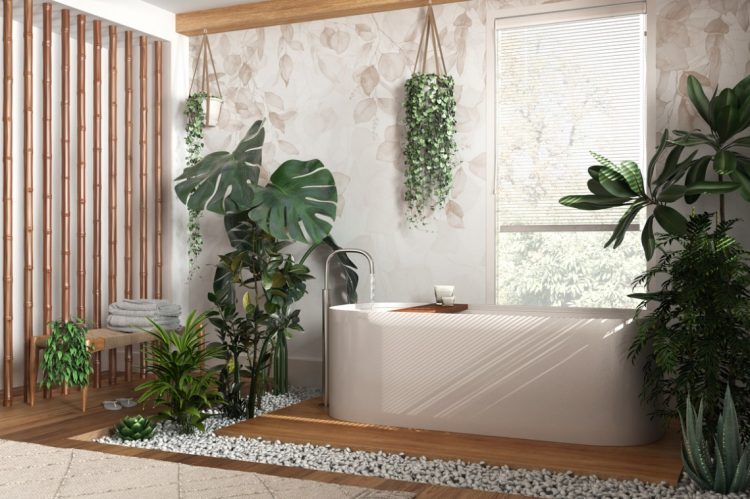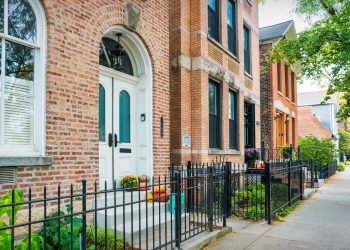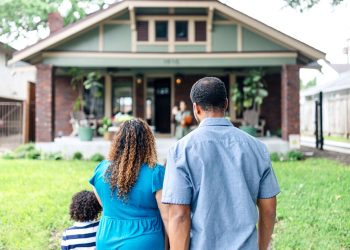If you were to ask 10 people about their thoughts on “Biophilic Design,” it is possible that eight of them would respond with a blank stare. Although the term may be new, the concept is already familiar to most of us, and the development of this trend began at least 20 years ago.
Biophilic design simply revolves around the idea that individuals will experience greater happiness if their interior living spaces are meaningfully integrated with the natural world outside. This integration encompasses aspects such as interior light and ventilation, appealing views, as well as the sights, scents, and sounds of the exterior landscape. It is often described as the inclusion of natural materials and greenery within interiors, not only for visual stimulation but also to enhance air quality. However, it is important to note that the concept extends far beyond these elements.
Old ideas — a new term
Biophilic design can enhance the sense of comfort that a home provides, benefiting both physical and emotional well-being. In other words, it represents a contemporary approach to the traditional concept of “bringing the outside in” to create a comfortable home environment. Modern homes have evolved far beyond mere protection from the elements.
While trends come and go, many architects and designers are already embracing biophilic design, and it is anticipated that the luxury market will continue to respond positively to this idea. Biophilic design acknowledges the unique connection between humans and nature, and recognizes that nature is specific to its location. As a result, biophilic design can manifest differently in luxury communities such as Palm Springs, Nantucket, Aspen or Seattle. However, it can be equally applied to high-rise condo units, single-level ranch homes or estates on extensive properties.
Primary expression of biophilic design centers around the following:
- Environmental features, or “place-based” architecture
- Organic shapes and forms
- Natural and native materials
- Light and space
- The concept of home as refuge
Although proponents may define and describe the principles in various ways, these principles are rooted in the relationship between humans and the natural world. The aim of this evolving paradigm is not to isolate the indoors from the outdoors but to foster a genuine partnership between the home and nature, with the goal of creating the best possible living environment for human beings.
Biophilic design 101: a brief overview
While sustainability, conservation and energy efficiency remain integral aspects of biophilic design, this new term offers a more inclusive approach to encompass all these commendable efforts. Think of it as a way to blur the boundaries between the natural outdoor world and the built indoor environment.
Biophilic design is not limited to homes alone. It has been convincingly demonstrated that when factory workers have periodic access to the outdoors during their workday, their job satisfaction and productivity rates increase. Similarly, office workers who have views of green spaces and trees instead of parking lots, and can observe the sun’s movement across the sky, experience less stress, greater creativity and fewer sick days. These are just two examples of the lessons learned by commercial and industrial architects who are dedicated to improving working conditions worldwide. Want to learn more? Read this article.
The same principles apply to the home environment. Extensive research has shown a correlation between natural light and improved sleep, between the presence of plants or “living walls” and better air quality, and between water features (both indoors, as well as views of pools or fountains in the yard) and a sense of well-being.
This field will undoubtedly attract significant attention as home builders, real estate professionals, architects, designers, psychologists and mental-health experts become more attuned to the principles of biophilic design. Architectural Digest recently highlighted some impressive elements of this design philosophy, referring to it as a “movement” rather than a passing trend.
If you aim to stay at the forefront of a potentially transformative shift in home design priorities, biophilic design demands your attention. It is expected to have a substantial impact on the luxury home market as discerning buyers become more familiar with this developing philosophy. It can be seen as an architectural and design evolution that, in some ways, is quite revolutionary. However, its ultimate trajectory remains uncertain.
As a real estate professional in a unique segment of the market, you can gain knowledge about biophilic design and other crucial luxury housing trends through membership in the Institute for Luxury Home Marketing (ILHM). Membership offers distinct advantages, including the prestigious Certified Luxury Home Marketing Specialist designation, as well as marketing updates, statistical reports, access to podcasts, a wide range of educational materials, and networking opportunities with fellow members across the United States and Canada. Membership is open to all licensed real estate professionals, regardless of affiliation.
Learn about ILHM membership and get started on the path to success.











